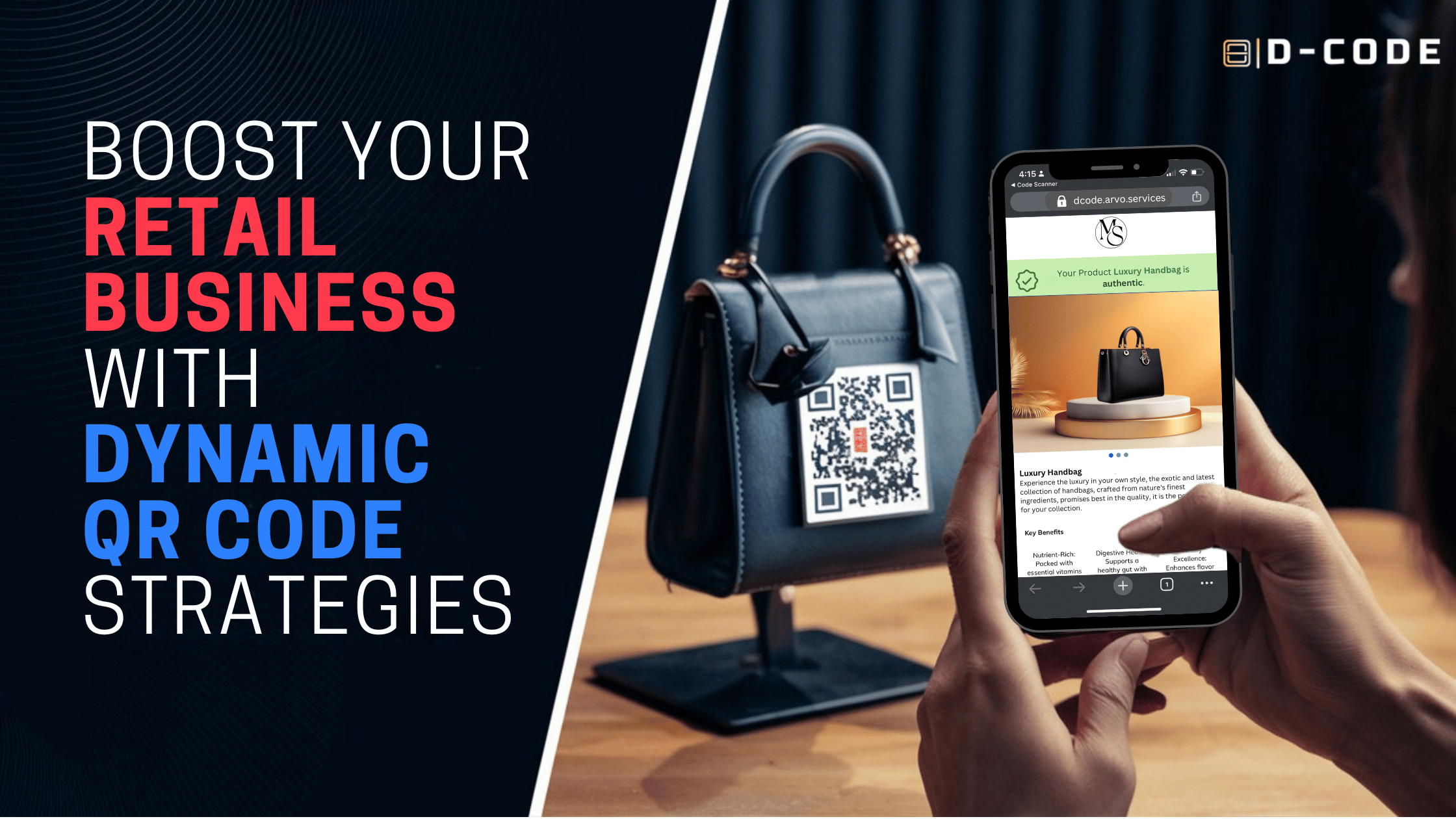Customer experience is everything. Discover how dynamic QR codes can help you connect with customers like never before. Shopping will never be the same. Dynamic QR code is set to transform the retail landscape.

In the competitive retail landscape, enhancing customer engagement is critical. Retailers need innovative tools to connect with customers and elevate their shopping experience. Dynamic QR codes have emerged as a powerful solution, offering an interactive blend of the physical and digital realms. By integrating dynamic QR codes into your retail strategy, you can revolutionize customer interaction and drive engagement.
The Power of Dynamic QR Codes
Dynamic QR codes allow for real-time updates and data tracking, setting them apart from static codes. Retailers can update the content linked to a QR code without altering the code itself, providing up-to-date information and personalized experiences. This flexibility makes dynamic QR codes an essential tool for enhancing customer interaction and engagement.
Why Retail Needs QR Codes
Dynamic QR codes bridge the gap between offline and online shopping, offering customers enriched experiences that drive engagement and loyalty. They enable retailers to provide detailed product information, collect valuable feedback, offer personalized experiences, and more. By leveraging these capabilities, retailers can transform their operations and stay competitive in the digital age.
5 Ways to Use Dynamic QR Codes for Customer Interaction in Retail
Interactive Product Information
Dynamic QR codes can offer detailed, interactive product information. Customers can scan a QR code on a product tag to access specifications, usage instructions, product certification, and reviews. This instant access helps customers make informed decisions, increasing satisfaction and likelihood of purchase. Retailers can keep this information updated, ensuring customers always have the latest details.
Feedback and Surveys
Collecting customer feedback is essential for improving products and services. Dynamic QR codes simplify this process by linking to feedback forms and surveys. Customers can quickly scan a QR code to share their thoughts and experiences, providing retailers with valuable insights. This real-time feedback helps retailers address issues promptly and enhance customer satisfaction.
Personalized Shopping Experiences
Personalization is crucial for engaging modern consumers. Dynamic QR codes facilitate personalized shopping experiences by linking to customized landing pages based on customer preferences and previous interactions. For instance, scanning a QR code in a clothing store might direct a customer to a page featuring personalized style recommendations and special offers, making them feel valued and understood.
Analytics Data
Dynamic QR codes provide detailed analytics data on customer interactions. Retailers can track the number of scans, time of scans, and other customer data, gaining insights into customer behavior and preferences. This information helps retailers refine their marketing strategies and improve customer targeting, ultimately boosting engagement and sales.
Customizable Landing Pages
Dynamic QR codes can link to customizable landing pages tailored to specific products or campaigns. Retailers can create landing pages that match the customer’s needs, offering detailed product information, promotional offers, and more. This customization enhances the customer experience, making it more relevant and engaging.
Case Studies: Successful Implementations
Several retailers have successfully integrated dynamic QR codes into their operations, seeing significant improvements in customer engagement and sales. For example, a major fashion retailer used QR codes to provide customers with exclusive content and personalized offers, resulting in a 20% increase in customer retention. An electronics store used QR codes to offer detailed product tutorials and support, enhancing customer experience and boosting sales.
Best Practices for Implementing QR Codes
To maximize the benefits of dynamic QR codes, retailers should follow some best practices:
- Ensure QR Codes Are Easily Accessible: Place QR codes in visible and convenient locations within the store.
- Provide Clear Instructions: Include simple instructions on how to scan the QR codes to ensure customers know how to use them.
- Keep Content Updated: Regularly update the content linked to the QR codes to provide the most relevant and current information.
- Use Analytics: Track the usage of QR codes to gather data on customer interactions and preferences, and adjust strategies accordingly.
- Promote QR Code Usage: Educate customers about the benefits of scanning QR codes through in-store signage and staff assistance.
Conclusion
Dynamic QR codes are a powerful tool for retailers to enhance customer interaction and engagement. By implementing these five strategies—offering interactive product information, collecting feedback, providing personalized experiences, analyzing customer data, and creating customizable landing pages—retailers can transform the customer experience and drive loyalty and sales. As the retail landscape evolves, embracing innovative technologies like dynamic QR codes will be essential for staying competitive and meeting the needs of modern consumers.
FAQs
1. What are dynamic QR codes?
Dynamic QR codes are scannable codes that allow real-time updates and data tracking, enabling retailers to modify the content behind the code without changing the code itself.
2. How can QR codes enhance customer engagement in retail?
QR codes can provide interactive product information, facilitate feedback collection, offer personalized shopping experiences, track customer analytics, and link to customizable landing pages.
3. What are some best practices for using QR codes in retail?
Ensure QR codes are easily accessible, provide clear instructions, keep content updated, use analytics to track interactions, and promote QR code usage to customers.
4. Can QR codes be used for feedback and surveys?
Yes, dynamic QR codes can link to feedback forms and surveys, making it easy for customers to share their thoughts and experiences.
5. How do QR codes provide personalized shopping experiences?
By linking to customized landing pages based on customer preferences and previous interactions, QR codes can offer personalized recommendations and special offers.
6. Are there any successful examples of QR codes in retail?
Yes, many retailers have successfully used QR codes to enhance customer engagement, such as providing exclusive content and personalized offers, resulting in increased customer retention and sales.



